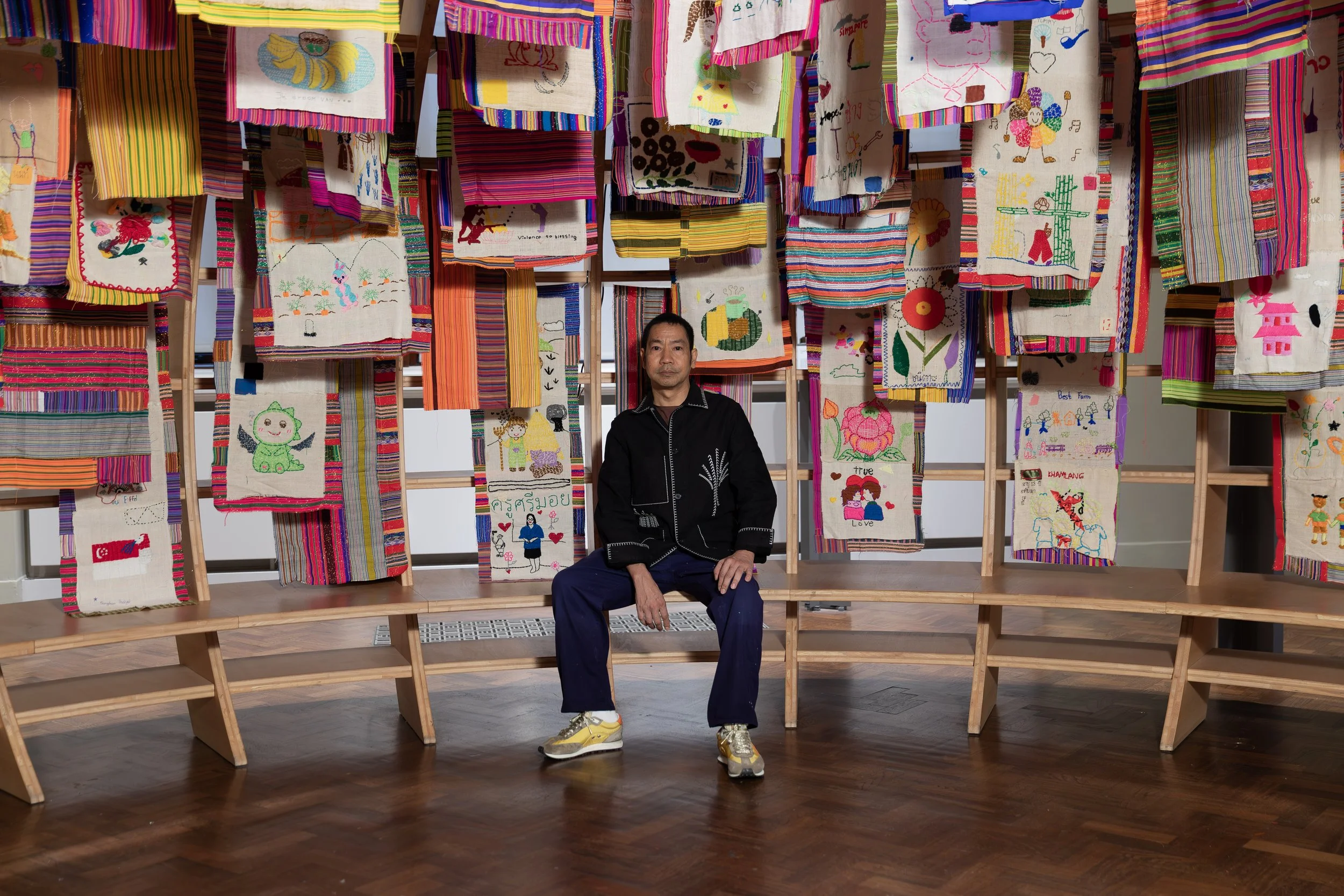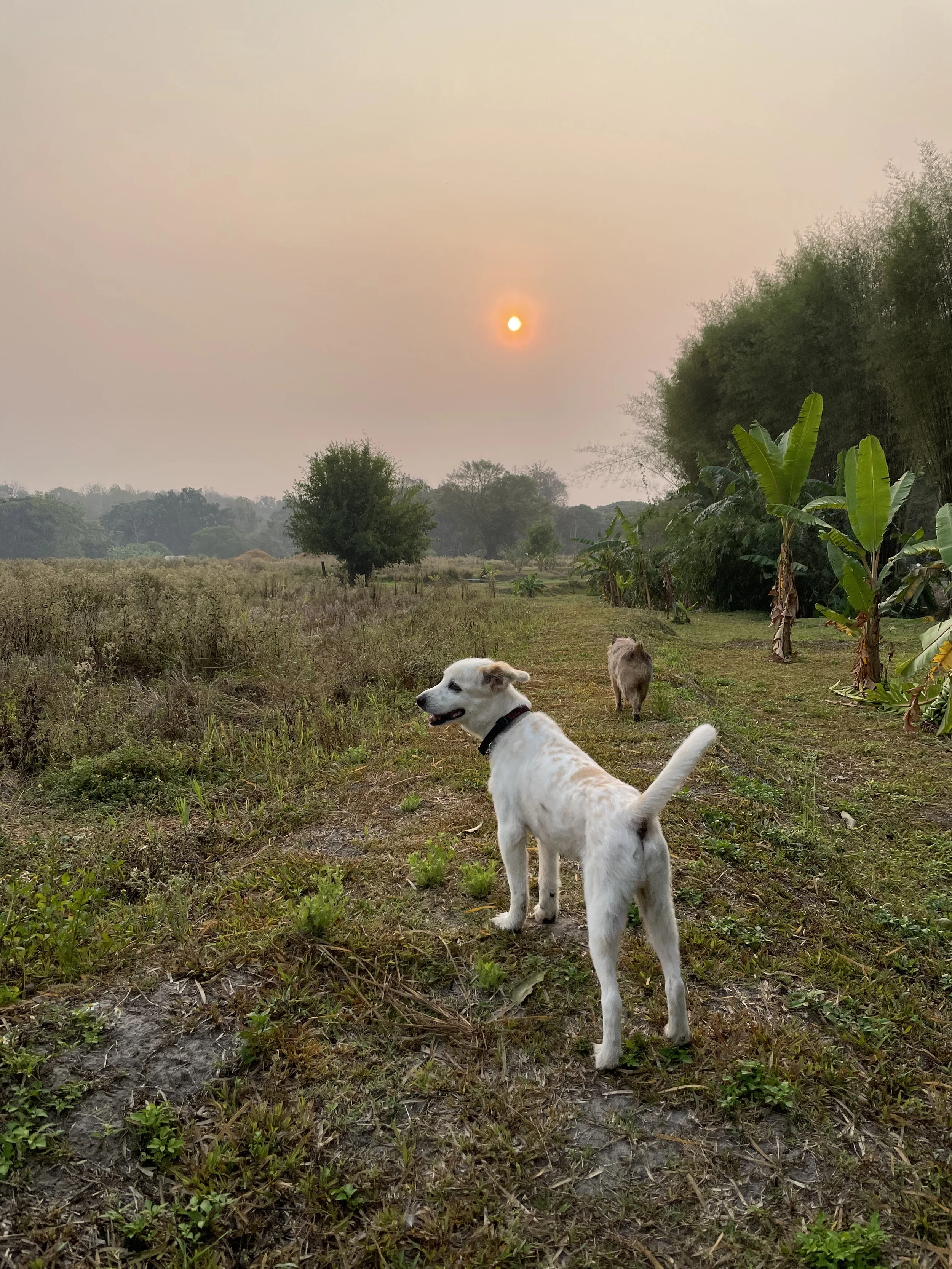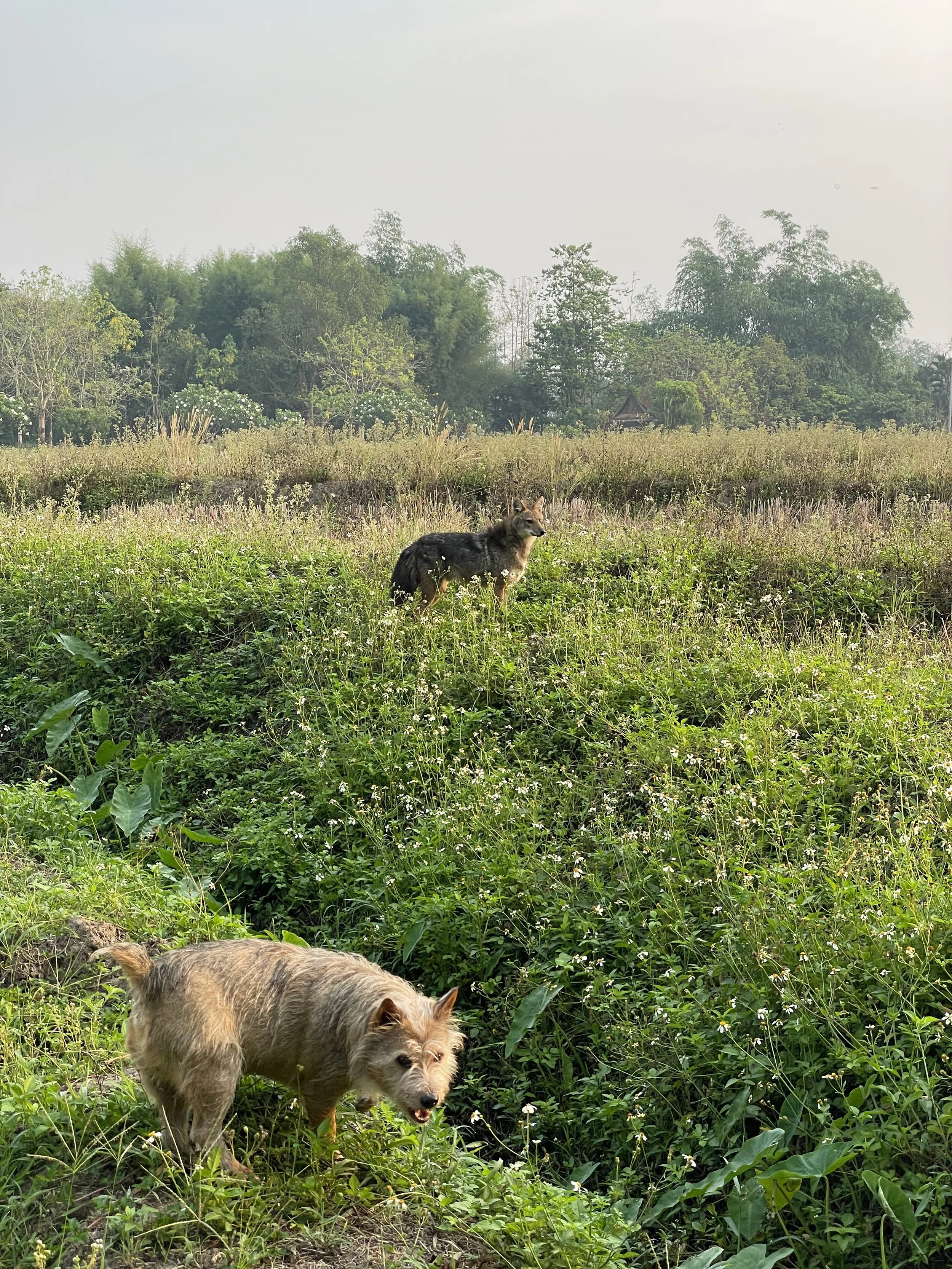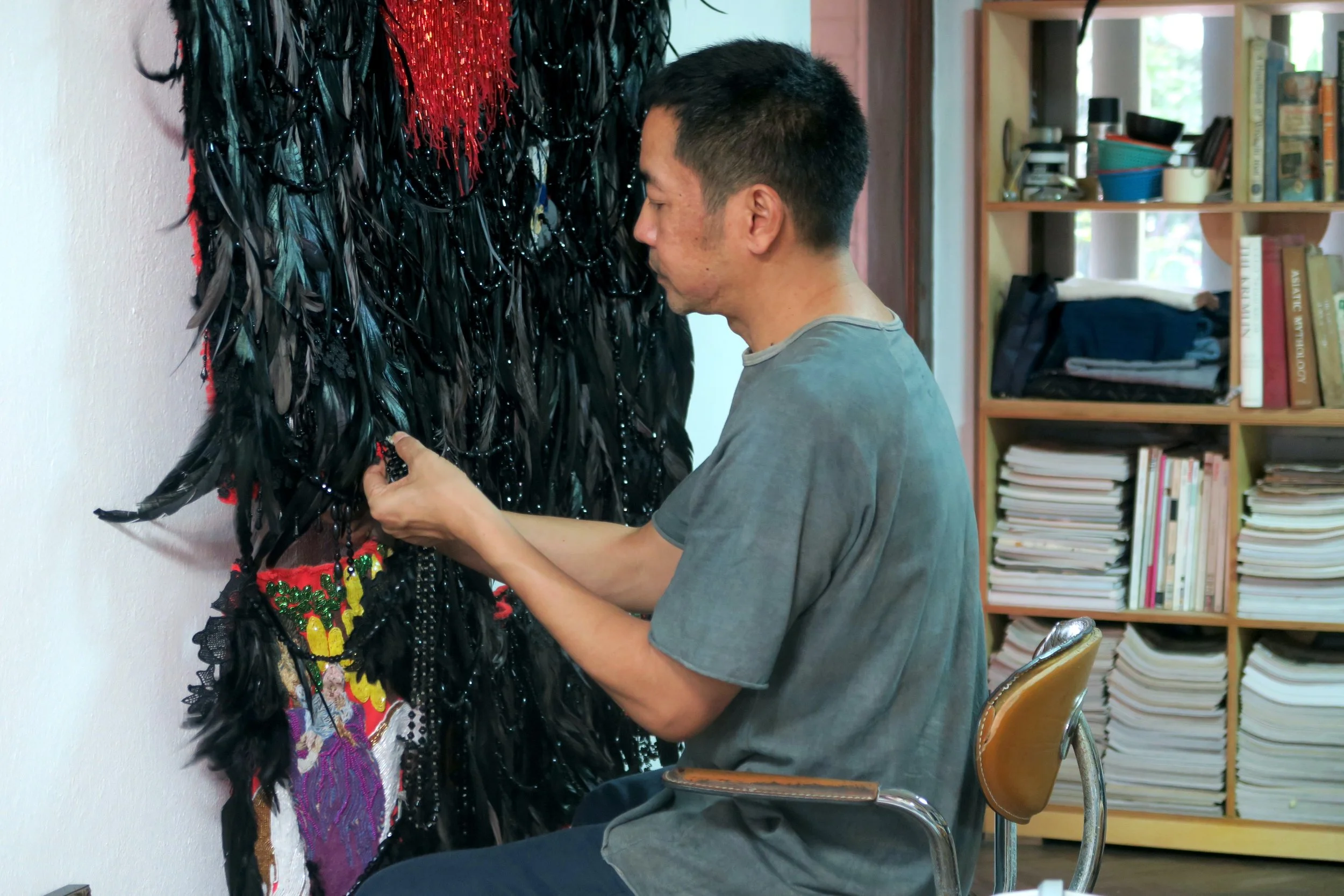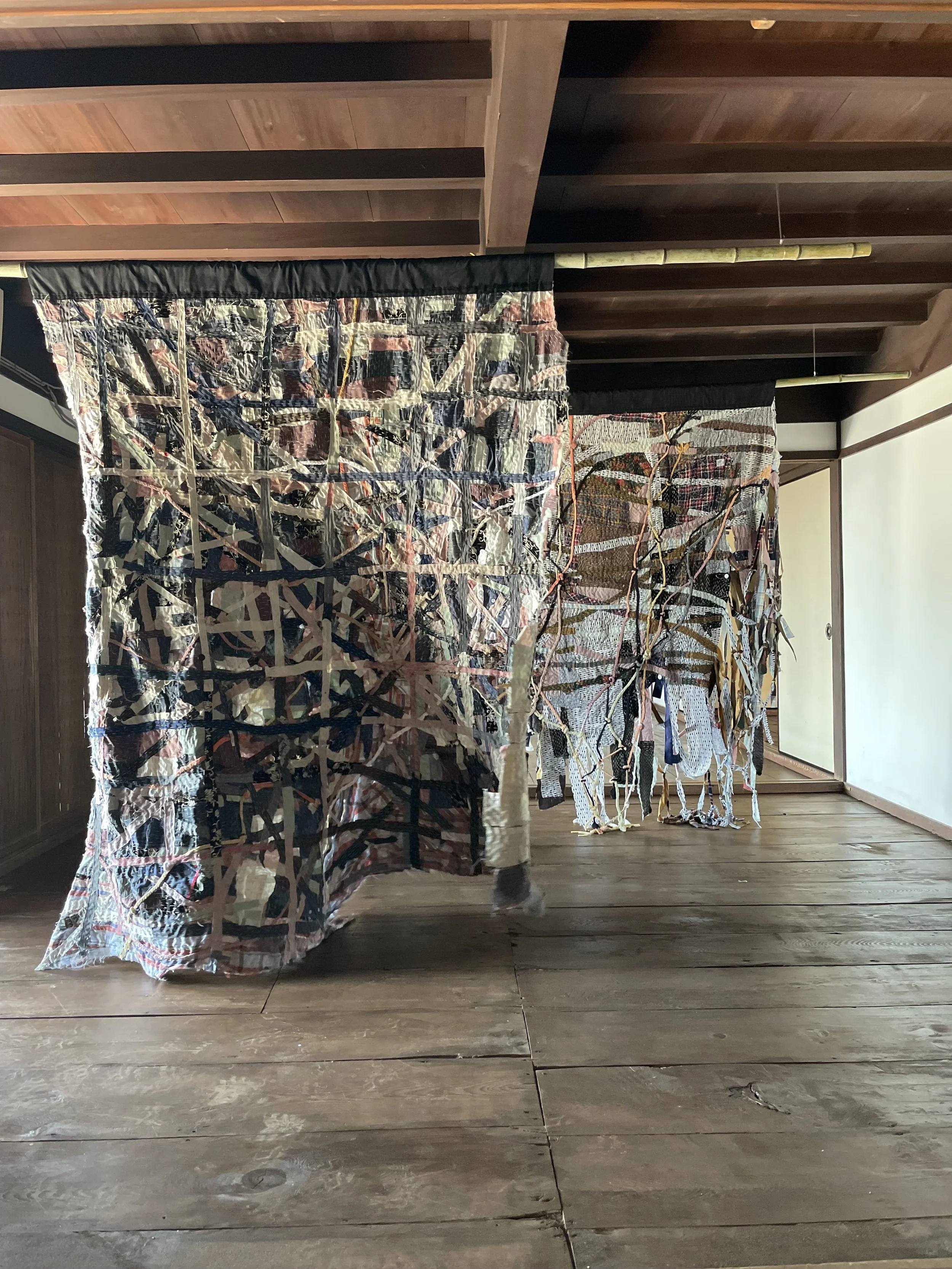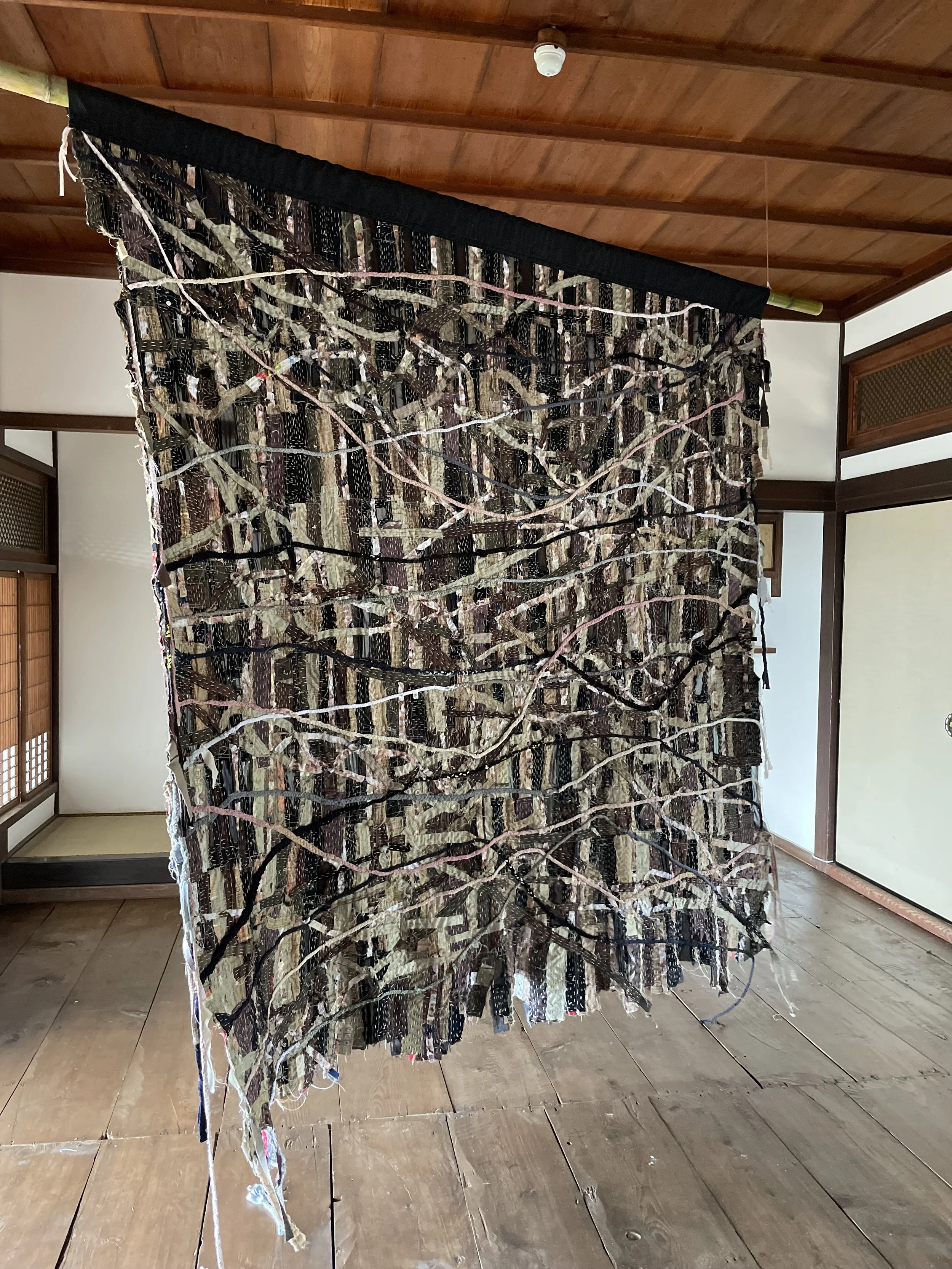Midpoint: Jakkai Siributr
V&A, Setouchi Triennale and Murate Art District
Midpoint is a monthly series that invites established Southeast Asian contemporary artists to take stock of their career thus far, reflect upon generational shifts and consider the advantages and challenges of working in the present day. It is part of A&M Interviews and builds upon the popular Fresh Face series.
Jakkai Siributr’s Artist Portrait at the V&A. Image courtesy of Antonio Parente and Flowers Gallery.
Jakkai Siributr is a Thai artist who works between his studios in Bangkok and Chiang Mai. In recent years, there has been a surge of interest in his textile artworks, which he has been making for close to three decades. In the past couple of months, he has unveiled his ongoing series of work There’s no Place (2020-) at the Victoria and Albert Museum with the London Design Festival, and a new body of work, Despatch (2025) at the Setouchi Triennale. He will soon open his first solo exhibition in Italy at the Murate Art District (MAD) in Florence. In this conversation, we find out about his art-making routine, the work he does with marginalised communities, and a formula for success that has served him well.
Could you share a decision that marked a significant turn in your path as an artist?
For me, it was the decision to become a full-time artist, leaving my job as a full-time lecturer at Thammasat University after almost ten years. During that same time, I also freelanced as an illustrator and writer for glossy magazines which led to the publication of a travel book and also my role as editor-at-large for House Beautiful Magazine. While it was all fun, and helped to pay the bills, it took away my time to focus on art making. It was not a difficult decision to make. One day, I was stuck in the notorious Bangkok traffic and I thought about the hours I could be in my studio instead of sitting in a car. The next day, I decided to quit all of it to continue my artistic journey and never looked back.
Jakkai Siributr, Everybody Wanna Be Happy, installation view at CHAT, 2023. Image courtesy of CHAT (Centre for Heritage, Arts & Textiles), Hong Kong.
What have been milestone achievements for you as an artist, and why have they been particularly memorable?
I have been presented with many opportunities over the course of my career. Some were more significant than others. I consider them to be great career breaks and a few have been life-changing. My exhibition SHROUD at The Art Centre Chulalongkorn University in 2011 was a significant point in my artistic practice. Along with the usual tapestries, I also experimented with sculptures, costumes and installations. I finally broke the mould and discovered that I could do anything with the textile medium. Everybody Wanna Be Happy at CHAT (Centre for Heritage, Arts & Textiles) in 2023 certainly tops the list of milestone achievements. This major survey show has led to many great opportunities in the years that follow, such as my solo shows at 100 Tonson Foundation and The Whitworth, and most recently, the exhibition of my work at the V&A is a dream come true for me.
Morning walk. Image courtesy of Jakkai Siributr.
Could you walk us through a typical work day, or a typical week? What routine do you follow to nourish yourself and your artistic practice.
Exercise, reading and taking my time at the start of the day is essential to my artistic practice. I wake up early around 5.30 to 6.00am everyday, even on the weekend. If I am in Bangkok, I will go for a 40-minute run or walk at a nearby park. When I am in Chiang Mai, I will take long walks with my dogs to breathe in the clean air and be surrounded by nature. Then I have a couple of hours of quiet time to catch up on my reading, including newspapers, novels, artbooks, social media and so on, and I will start my day in the studio at around 9.00am. At noon, I take a one-hour lunch break and do a little bit more reading. I then head back to the studio and continue working until about 5.00pm. I will end my work day with 40 minutes of yoga to relieve tension in my muscles and nerves.
Jakkai Siributr at his Bangkok studio. Photo by Preecha Patara. Image courtesy of 100 Tonson Foundation.
Could you describe your studio and how it has evolved over the years to become what it is today? What do you enjoy about it, and what do you wish to improve?
Today, I have two studios, one in Chiang Mai and one in Bangkok which still remains the main production studio where I work with my assistants. The Bangkok studio started its life as a garage and storage space. My great grandmother built the house in the late 1950s and my parents later converted it into their bedroom and living space. That is until I gutted out everything when the house was passed on to me. It has many limitations: a low ceiling, very few wall spaces and it is a little crowded with three assistants. But it has served me well since the very beginning of my career, and many of my seminal works were created here. There’s nothing I would want to improve except to create a new purpose-built studio like the one I have in Chiang Mai from several years ago. The Chiang Mai studio has high ceilings and plenty of wall space, and it is where many of my large scale pieces are created. I have been spending an equal amount of time each month between Bangkok and Chiang Mai since the COVID-19 pandemic. The difference between the two studios is that in Chiang Mai, I get to work alone without any distractions from my assistants, so this studio serves as a place for me to experiment on a piece before taking it back to Bangkok for my assistants to continue the work.
A workshop with Shan refugees near the Thai-Myanmar border. Image courtesy of Jakkai Siributr.
You have consistently worked with marginalised communities, including refugee communities in your work. How did you decide to do so, and why is it important to you to tell their stories?
As a queer artist working with the textile medium since the mid 1990s, I definitely feel marginalised, and understand what it feels like to be on the periphery and the need for our voices to be heard. Certainly my situation cannot be compared to those of the persecuted or displaced communities. I feel fortunate that I get to do what l love everyday, so if I can use my art to bring their voices to a wider audience, it comes very naturally to me.
What do you think were the unique advantages and disadvantages you had when you were an emerging artist, and with establishing your place since then? If you could also talk about how your chosen mediums of textile and embroidery were received initially, and over time, that would be good.
When I started my career working with textiles, many curators and galleries were unsure where my work sat within fine art. This was a disadvantage for me as an emerging artist at the time, and I often felt excluded. This is unlike today, where textile art is having a moment and seems to be enjoying its surge in popularity. This, I believe, contributed to my being “discovered” in recent years. But looking back, being on the margins was also an advantage in that I could take more risks with my work, and I was fortunate enough to be able to keep on working even when I was not given much attention.
Jakkai Siributr, Campain Promises, installation view at SHROUD 2011 The Art Centre, Chulalongkorn University, 2011.
What has become easier or more difficult to do as time has gone by?
I don’t think it gets any easier. Sure, many more people are paying attention to my work but I still have self-doubt like I did as an emerging artist. The most difficult part for me these days is traveling for work as I have become quite a homebody since I have gotten older. Since September, I have travelled to London and Japan. And I am about to leave for Florence, Bergen and New York City. I will not be back in Thailand until early November. I yearn to be back in my studio, to sit still and think about the next project and get my hands busy again.
What do you think has been/is your purpose? How has it kept you going, or at times, how has it been challenging to push against boundaries in order to keep your focus? How has your purpose remained steadfast or evolved over the years?
My parents have instilled in me since I was a child that we should help others that are less fortunate whenever we can. I also attended United World College, and one of their missions is encouraging the spirit of giving back and community services, so I have always been interested in social developmental work. In the early years of my career, I was satisfied to have found a profession that I enjoyed. Gradually, I started to bring out unheard voices and work with communities. It has become very clear to me now that my purpose is to use art to help others and to contribute to society in my own small way.
It has become very clear to me now that my purpose is to use art to help others and to contribute to society in my own small way.
Jakkai Siributr, There's no Place, (2020-). Image courtesy of CHAT (Centre for Heritage, Arts & Textiles), Hong Kong.
Jakkai Siributr, Despatch Series, installation view at Setouchi Triennale, 2025. Image courtesy of the artist.
Could you talk about current/upcoming projects such as There’s no Place (2020-), now showing at the Victoria and Albert Museum (V&A), and at the Setouchi Triennale?
For this year’s London Design Festival (LDF) at the V&A, my ongoing project There’s no Place ( 2020-) has been included in their V&A x LDF programme. A soundscape was commissioned for this iteration and the exhibition runs until 19 October. Last week, the Setouchi Triennale-Autumn Session opened, and my new body of work is exhibited in a 120-year-old house on the island of Honjima. These works were constructed entirely from garments donated by residents of the island during a one-day workshop held earlier this year. It explores the theme of storytelling and shines a light on an aging population on the island and surrounding areas. Later this month, my first solo exhibition in Italy will open at the Murate Art District (MAD) in Florence.
And finally, what would be a key piece of advice to young practitioners, whether as artists, curators or in other roles? What has been your formula for success that they can learn from to apply to their own careers?
My formula for success may not apply for other young practitioners, but I strongly believe in the combination of luck, hard work, curiosity, honesty and acceptance. I have been lucky to have met many supporters, and to be presented with great opportunities over the course of my career. I also worked really hard and kept at it for almost thirty years now. My work addresses issues and explores themes that are close to my heart, and I never stop learning. But most importantly, I have stopped comparing myself to my peers and have accepted my situation and am grateful for all my achievements.

